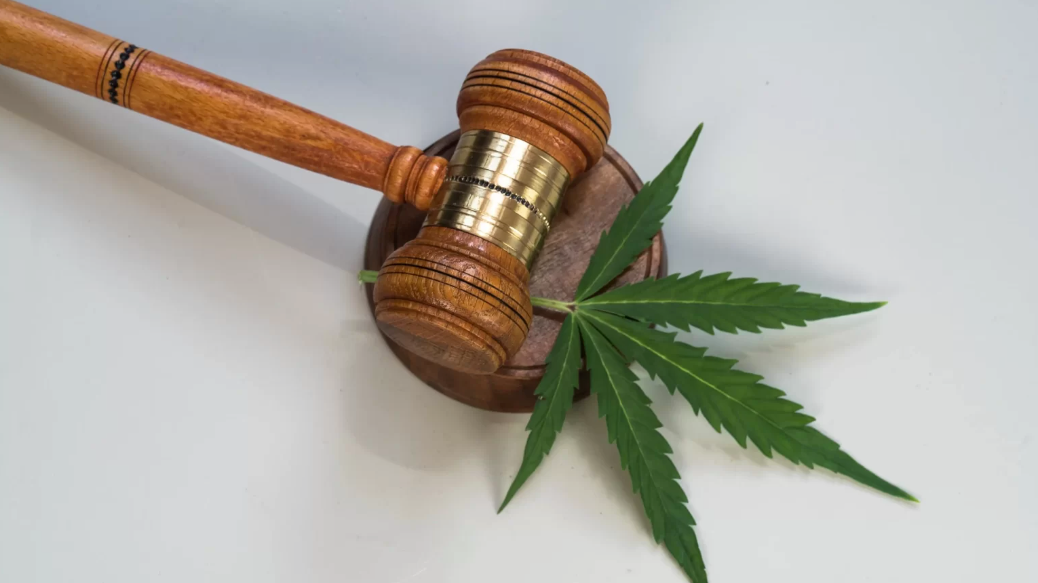What You Should "Realize" About THC-P

Imagine you’ve been exploring the vibrant world of cannabinoids, enjoying the effects of classics like THC and CBD, and even experimenting with newer players like Delta 8 and Delta 10. Just when you think you’ve seen it all, along comes THC-P, a cannabinoid that’s been described as the new “powerhouse” on the block. If you’re curious about what sets THC-P apart and why it’s making headlines, buckle up, as we’re about to take a deep dive into everything you should know about this cannabinoid.
Welcome to THC-P 101
Tetrahydrocannabiphorol (THC-P) is one of the newest cannabinoids to be discovered, and it’s already causing a stir. With a chemical structure that closely resembles THC (primary psychoactive component of cannabis), THC-P is believed to be significantly more potent than its more well-known cousin. This potency is what makes THC-P particularly intriguing, especially for those who are seasoned in the world of cannabis and are looking for a different kind of experience.
History
THC-P was discovered relatively recently, in 2019, by a team of Italian researchers who were exploring the chemical composition of cannabis. During their research, they identified tetrahydrocannabiphorol as one of the many cannabinoids present in the plant, but with a twist: its molecular structure suggested it could be up to 33x more active at cannabinoid receptors than THC. This discovery was a breakthrough, adding a new dimension to our understanding of the cannabis plant and its potential effects.
Unlike THC, which has been the subject of study for decades, THC-P is still in the early stages of research. This means that much of what we know about it is based on preliminary findings, and there’s still a lot to learn about how it works and what it can do. However, its discovery has already had a significant impact, sparking interest among researchers, producers, and consumers alike.
How It’s Made
THC-P is a naturally occurring cannabinoid in cannabis, but like many other cannabinoids, it’s found in very low concentrations. To produce tetrahydrocannabiphorol in larger quantities, it can be isolated from the plant through advanced extraction techniques. This process typically involves using solvents to extract the full spectrum of cannabinoids from the plant material, followed by a series of purification steps to isolate THC-P.
Alternatively, THC-P can be synthesized in a laboratory setting by modifying the molecular structure of other cannabinoids. This method allows for the production of pure tetrahydrocannabiphorol without the need for large amounts of plant material. Once extracted or synthesized, THC-P can be used to create a variety of products.
Legality
THC-P’s legal status in the United States is currently uncertain and evolving, as it’s broken down in two levels:
- Federal Level: THC-P is not specifically listed as a controlled substance under the Federal Controlled Substances Act. Having said that, it’s a cannabinoid derived from cannabis, which makes its status ambiguous. It may fall under the same legal framework as other cannabinoids derived from hemp, as per the 2018 Farm Bill, which legalized hemp and its derivatives with less than 0.3% Delta-9 THC. Since THC-P isn’t explicitly addressed, its legality might be subject to interpretation.
- State Level: States may have varying regulations regarding THC-P. Some states might treat it similarly to other hemp-derived cannabinoids, while others may have specific restrictions or bans. As THC-P is relatively new, many states have not yet developed specific regulations for it.
Given the evolving nature of cannabinoid regulations, it is important to check the most current state (or even county) laws.
Getting to Know THC-P’s Uses and Effects
THC-P is believed to interact with the body’s endocannabinoid system (ECS) in a manner similar to THC, but with a higher binding affinity for cannabinoid receptors, particularly the CB1 receptor, which is responsible for the psychoactive effects of cannabis. This means that even in small doses, tetrahydrocannabiphorol can produce potent effects.
Users of tetrahydrocannabiphorol often describe its effects as intense and long-lasting, with a stronger psychoactive impact compared to THC. It’s known for producing a profound sense of euphoria, enhanced sensory perception, and a deep, blissful body experience. Nonetheless, due to its potency, it’s essential to approach THC-P with caution, especially for those who are new to cannabinoids or have a lower tolerance.
Different THC-P Product Types
THC-P’s versatility is reflected in the variety of products available on the market, some of them even being found here at Realize, such as the following:
- THC-P Gummies: THCV gummies are a nice choice for those looking for a tasty, discreet, and easy way to consume this cannabinoid. These gummies come in various flavors and have a pre-measured dose, making it easy to control your intake. The effects of gummies are usually slower to kick in, taking anywhere from 30 minutes to an hour, but they last longer, providing a sustained experience.
- THC-P Tinctures: Typically administered sublingually (under the tongue) for quick absorption, though they can also be added to food and drinks. This versatility, combined with the ability to adjust the dosage drop by drop, makes tinctures a favorite among experienced users. The effects of tinctures can be felt within 15 to 45 minutes, offering a balance between edibles and vaping.
- THC-P Vapes: Vaping is one of the most popular ways to consume THC-P, thanks to its convenience and rapid effects, along with it being paired with numerous strains. THCV vapes come in various forms, including disposable vape pens and pre-filled cartridges. Vaping allows users to inhale THC-P leading to almost immediate effects. This method is favored for its ease of use, portability, and the ability to control the dosage with each puff, making it a great choice for those seeking quick and effective results
- THC-P Flower: Offers a more traditional way to consume cannabinoids. This product consists of hemp or cannabis flower that has been infused with THC-P, providing a balanced and immediate onset of effects. THC-P flower is often preferred by users who enjoy the ritual of smoking or vaporizing and want to experience the full spectrum of cannabinoids and terpenes found in the plant.
- THC-P Concentrates: For those seeking a potent experience, THC-P concentrates are the way to go. These products, which include dabs, wax, and shatter, are highly concentrated forms of THC-P. They offer intense effects with just a small amount, making them best suited for experienced users or those looking for a powerful experience. Concentrates are typically vaporized using a dab rig or specialized vaporizer, providing a fast and strong onset of effects.



